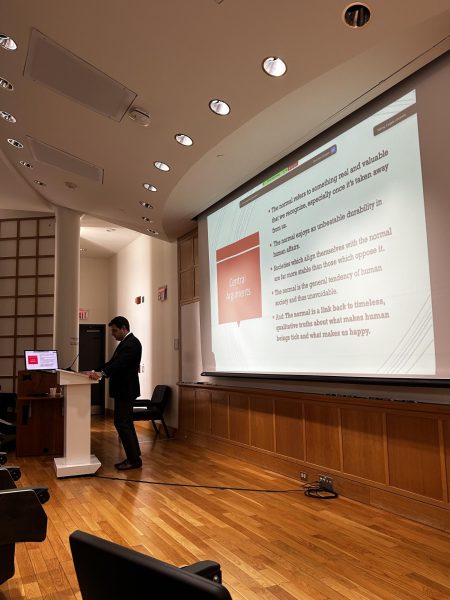Council Examines Issues Of Diversity On Colgate’s Campus
“A lot of students of color are uncomfortable being at this school,” first-year Malik Wright said. “I came from the Bronx, where the majority of people are black or Hispanic; it’s just a different environment here. I’m not used to it.”
On Wednesday afternoon, two sessions of the initial meeting of Colgate’s new Diversity Council were held in Brehmer Theater of the Dana Arts Center. Led by Dean of Faculty and Provost Lyle Roelofs and Dean of the College Adam Weinberg, both sessions were well attended by representatives of Colgate’s students, faculty and staff.
When President of the University Rebecca Chopp took office in 2002, she began working with then-Dean of Faculty and Provost Jack Dovidio to research diversity and inclusivity at Colgate. A Diversity Pre-Planning Committee was appointed in 2003 to define the parameters on which the University’s Diversity Council would operate.
The council consists of two bodies: a larger group dedicated to fostering conversation on issues of diversity, and a smaller Executive Committee to oversee the Diversity Council. Each SGA recognized student organization on campus was invited to elect two representatives to the Council, which is set to convene monthly in meetings open to the public. The Executive Committee, which will meet biweekly, consists of senior faculty and administrators.
“We know some of the recommendations that come from this Diversity Council will be controversial,” Roelofs said. “We wanted people on the Executive Committee who would be here [for an extended period of time] and who have tenure, so that they can wade into contentious waters safely.”
After an initial overview of the Council and a review of the report from Colgate’s Diversity Pre-Planning Committee, Diversity Council members were offered the opportunity to speak out on topics of diversity.
Those members who chose to speak addressed a variety of issues from the lack of student representation on the Executive Committee to issues to be addressed in order to promote diversity, such as housing and admissions.
Senior Sean Devlin, challenged the University’s definition of a diverse community as “a critical mass of people from traditionally underrepresented and disadvantaged groups.”
“Bringing in more students of color does not increase intellectual diversity,” Devlin said. “It simply increases diversity of skin color. Imagine 10 white people in a room talking, all with very diverse intellectual interests and world views. Now picture a second room full of 10 people, all with different skin colors, yet similar intellectual interests and world views.” Diversity is a very complex issue, especially at the university level. Finding a balance between racial and intellectual diversity is extremely intricate.
“Colgate is telling the world that it would rather the second room than the first, Devlin continued. “Great message, Colgate. By way, thanks Colgate, for letting me know that I am not an individual and that I bring no diversity to the table.”
Assistant Professor of Education John Palmer responded by challenging the University to do a better job of creating a more welcoming environment for students of color.
“You build it, and they will come,” Palmer said, “but will they enjoy it?”
Colgate recently joined the Consortium on High Achievement and Success (CHAS Consortium) in order to share ideas, struggles and best practices with 33 other private, select liberal arts colleges and universities.
“Conversations like this aren’t unique to Colgate,” Weinberg said. “There is no clear pattern with residential living, but the best thinking is to create places for students to develop comfort zones as well as programs to get people out of those comfort zones to walk across difference.”
The Harlem Renaissance Center (HRC) was suggested as one such place for students to develop a comfort zone.
“Not just black students live in the HRC,” Wright said, “and I don’t think we’re trying to segregate ourselves. The HRC is in a random wing of the Bryant Complex; if it were in West Hall, it would be more visible to the community.”
Not singling out the HRC in the study of diversity at Colgate was also stressed.
“People tend to pick on the HRC,” Weinberg said. “Let’s look more broadly and examine all the different ways that students choose to live together.”
Despite the differing opinions expressed, the Diversity Council was successful in creating a forum for conversation.
“I’m just excited that people are willing to talk about it,” Director of the ALANA Cultural Center Jaime Nolan said. “We’re on the edge of big developments here in terms of diversity.”




